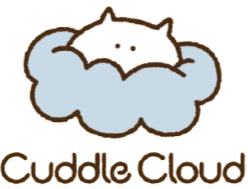The Truth About "Hypoallergenic" Dogs
Share
For millions of allergy sufferers, the dream of owning a dog can feel out of reach. Let's de-bunk the myths and explore what makes a dog a better choice for people with allergies.

De-Bunking the Myth: What Does "Hypoallergenic" Actually Mean?
First and foremost, let's get the most critical point out of the way: no dog is 100% allergen-free. The term "hypoallergenic" is misleading. When people are allergic to dogs, they aren't reacting to the hair itself. The allergy is triggered by proteins found in a dog's:
- Dander (dead skin flakes)
- Saliva (which gets on their coat when they groom themselves)
- Urine
So-called "hypoallergenic" breeds are more accurately described as low-allergen. They are breeds that simply produce fewer allergens or release them into the environment less frequently.
What Makes a Breed "Low-Allergen"?
- Non-shedding coats: The most significant factor is a coat that doesn't shed much. Curly, wiry, or hair-like coats tend to trap dander and saliva-coated hair instead of releasing it all over your home.
- Less drooling: Breeds that drool less spread fewer salivary allergens.
- Coat type: Dogs without a thick undercoat often shed less dander.
Top Low-Allergen Breeds and Their Grooming Needs
While not a magic bullet, choosing one of these breeds can make a world of difference for a person with mild to moderate allergies. Just remember that their low-shedding coats often mean higher grooming needs.

Poodle (Standard, Miniature, Toy)
- Coat: Their tightly curled, single-layer coat is the gold standard for trapping dander.
- Grooming: This trapping ability means they must have regular professional grooming (every 4-6 weeks) and frequent brushing at home to prevent painful matting.
Portuguese Water Dog
- Coat: They have a single layer of robust, curly hair that sheds very minimally.
- Grooming: Requires brushing a few times a week to keep the coat healthy and professional trims every couple of months.
Miniature Schnauzer
- Coat: Their wiry topcoat and soft undercoat combination results in minimal shedding.
- Grooming: Needs regular brushing and professional grooming or "hand-stripping" every 6-8 weeks to maintain the coat's texture.
Yorkshire Terrier
- Coat: A Yorkie's coat is more like human hair than typical dog fur, which is great for allergies.
- Grooming: That silky hair requires daily brushing to prevent tangles and mats.
Maltese
- Coat: This breed boasts a long, white, silky coat that doesn't have an undercoat.
- Grooming: They are high-maintenance and demand daily brushing and regular trips to the groomer to keep their beautiful coat in top condition.
Managing Allergies: It's a Lifestyle, Not Just a Breed
Choosing a low-allergen breed is only the first step. To successfully live with a dog, allergy sufferers must adopt a lifestyle that minimizes allergens in the home.
- Commit to a Grooming Schedule: Don't skip grooming! Weekly brushing (ideally outside) and monthly baths with a quality dander-reducing shampoo can drastically reduce the allergen load.
- Maintain a Clean Home Environment: Create "dog-free" zones, like the bedroom. Use air purifiers with HEPA filters, vacuum and dust frequently, and wash all dog bedding, blankets, and toys regularly in hot water.
- Consult a Professional: Before committing, spend time with the breed you are considering to see how you react. Most importantly, talk to your doctor or allergist about management strategies to ensure you are making a healthy and sustainable choice for both you and your future furry friend.
